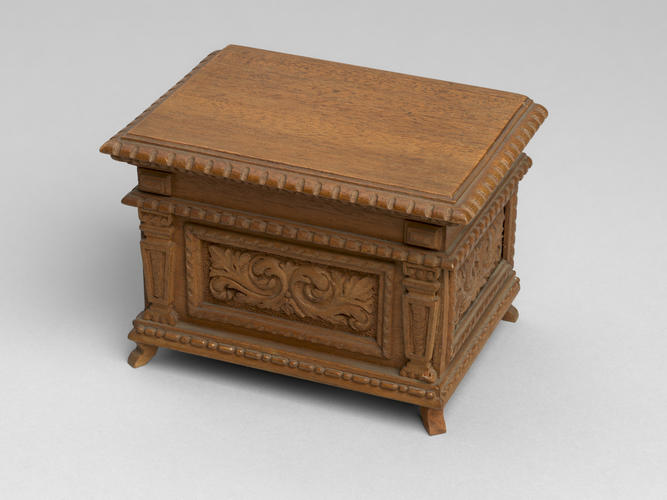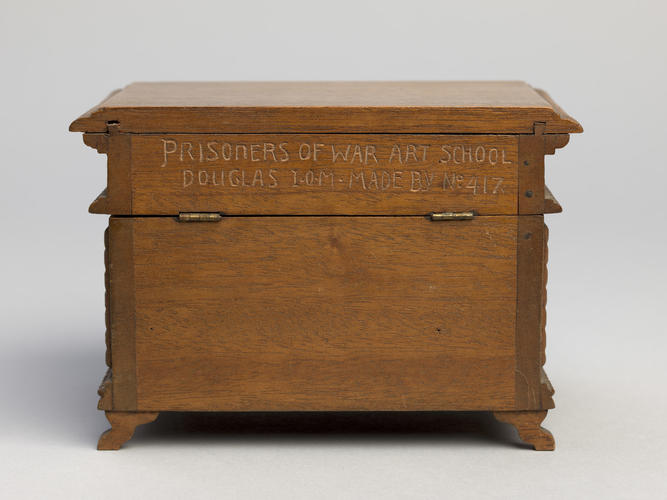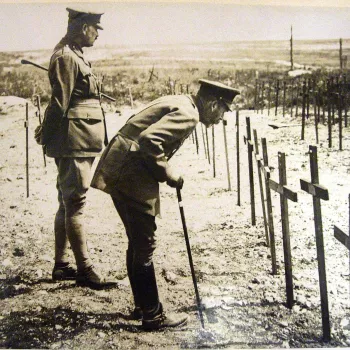Trinket box 1916
Wood, silk | 11.1 x 16.2 x 11.2 cm (whole object) | RCIN 69484
-
A trinket box of ornately carved light wood. The flat hinged lid has a gadrooned edge; the sides are carved with foliate panels and classical pilasters above a beaded lower border. It stands on four small feet and is lined with quilted green silk. It is accompanied by a letter from Colonel Madoc.
This box was signed by its maker, Prisoner No 417, who had been identified as Franz Sadenski, interned in Douglas Camp, a civilian camp, on the Isle of Man, during the First World War. In October 1916 he was transferred to Stratford Camp, London, for repatriation. During his time in Douglas Camp he was known to have made a number of carved boxes, which was a common pastime for those interned.
During the First World War, 26,000 prisoners were interned in two camps on the Isle of Man - Camp Knockaloe and Camp Douglas. Most of the prisoners were Austrian and German civilians who had been resident in Britain when war was declared. Of the two camps, Camp Douglas was smaller (only 2,700 of the 26,000 total prisoners) and reserved for those who could afford it; extra privileges such as separate huts or staff could be hired by internees.
Arts and crafts were a prominent part of camp life, as they were at other prisoner of war camps. Colonel Madoc, Commander of Camp Douglas for the duration of the war, sent a number of objects made by the internees to Queen Mary as had heard from his sister that the Queen was interested in such objects.Provenance
Made by Franz Sadenski, prisoner No. 417, at the Douglas Camp, Isle of Man. Sent to Queen Mary by Colonel HW Madoc, 1916.
Later formed part of King George V's War Museum at Windsor Castle, established to display his collection of First World War souvenirs; the King was assisted by the Royal Archivist & Librarian John Fortescue (1859-1933). Many of these objects were loaned to the Imperial War Museum in 1936 at the suggestion of King Edward VIII. -
Creator(s)
Acquirer(s)
-
Medium and techniques
Wood, silk
Measurements
11.1 x 16.2 x 11.2 cm (whole object)
Category
Object type(s)










